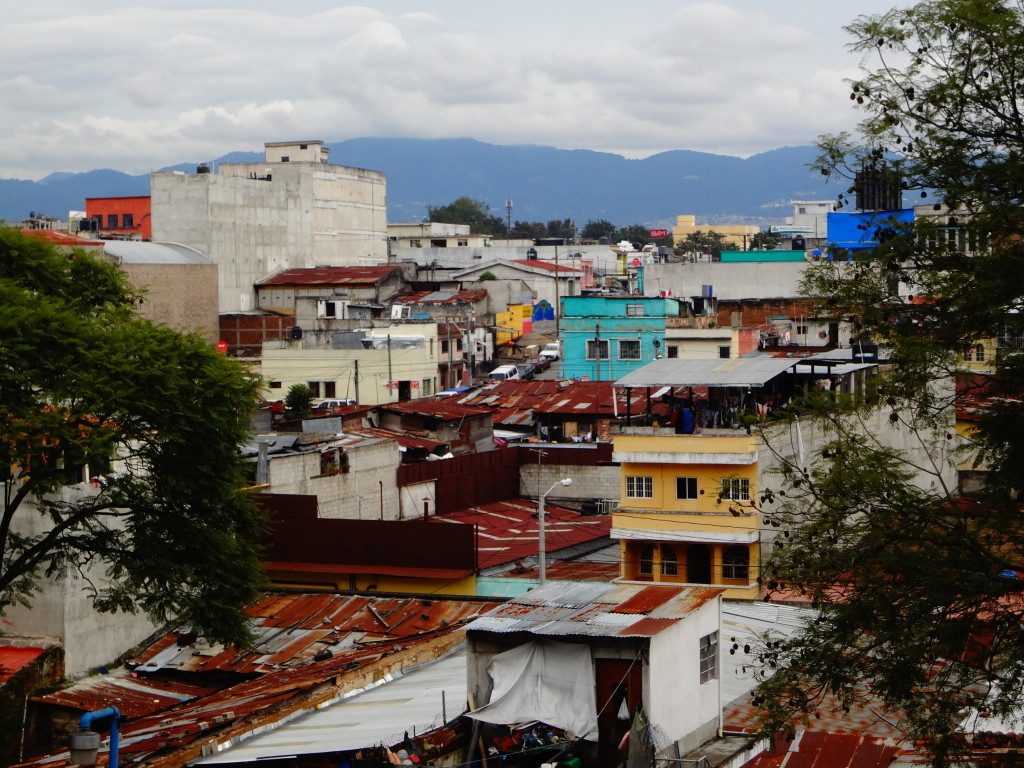
Big adventure on a small budget
By Jade Swartzberg, Contributor
A curvy, feminine silhouette dangles from the rearview mirror, bouncing playfully as the old bus jostles over bumpy roads, and a sticker of Jesus stares down solemnly from the door.
Across the aisle, three or four puppies start whining from a box above one gentleman’s head, and, at the next stop, a boy boards the bus cradling a hen in a blanket.
All around, people chatter in Spanish, but nearly all I can make out amid the trill of R’s is the occasional “gracias” or “buenos dias.”
My friend Marie and I are travelling through Honduras by “chicken bus.” These local buses, common in Central America, are usually redecorated and repurposed US school buses meant for carrying passengers, parcels, and poultry.
We just paid 140 lempira (about $7) for a ride to Copán to San Pedro Sula (a distance of about 150 kilometres), and all our worldly belongings for the month—some clothes, shoes, a camera, and a few other essentials—are stowed above our heads in our 60-litre hiking backpacks.
If this foreign bus ride inspires wanderlust, read on.
Four countries in four weeks for $3,000
Often overlooked in favour of its larger neighbour to the south, Central America offers lush jungles, volcano-dotted landscapes, idyllic sandy beaches, colonial Spanish towns, and Mayan ruins. The best part? Travelers can easily explore this culture-rich land on a shoestring.
At the end of September, I quit my job editing a small-town newspaper and a week later, Marie and I were on a plane bound for Guatemala City. We both needed an adventure, and our money-consciousness and mutual thirst for excitement made us perfect travel companions—and made Central America the perfect destination.
Before leaving, we roughly mapped out the month-long journey that would take us to Guatemala, El Salvador, Honduras, and Belize, based on Internet advice and travel guides, then waved goodbye to our nervous families. (Travel tip: Don’t leave home without a guide that is up-to-date. We relied on our Rough Guide to find places to eat and places to sleep throughout our trip.)
I’m probably a little strange, but I find the initial jolt of culture shock when arriving in an unfamiliar place quite thrilling. This time, a throng of Guatemalans waving taxi service placards and yelling in Spanish greeted us as we exited the airport.
We had heard that if you ride the chicken buses in Guatemala City you will get robbed and you might get shot, so we were grateful for a local friend who whisked us away from the airport, fed us black beans, cheese, and tostadas with avocado, and let us sleep in comfortable beds for two nights before dropping us off in the city of Antigua.
This quaint, colourfully colonial little town gave us our introduction to hostelling in Central America. Our hostel was clean and comfortable. By paying a few dollars extra ($13 each), we had a private room that included breakfast and a warm shower.
We stayed in hostels and bed and breakfasts throughout the trip, relying on our guidebook for recommendations, and never paid more than $20 a night each (at a nice bed and breakfast that served us complimentary hot chocolate whenever we wanted). The lowest we paid was $7 for a dorm bed at the Iguana Azul, the best hostel in Honduras.
Besides the savings, hostels are a great way to meet other backpackers. This paid off in El Salvador when we met an American guy who helped us navigate the local bus system and explore a capital city that may have been too dangerous for two women travelling alone.
And, if we had not ventured out into the city, we would not have stumbled across the best meal deal of the trip—$2 for two delicious, hot pupusas and a pop. (Pupusas—the national food of El Salvador—are like corn tortillas with different kinds of filling).
Food prices varied from place to place. Street food vendors are the cheapest way to go, but as our tummies became increasingly unsettled, we opted for more costly restaurant fare. One restaurant in Copan served a three-course backpacker’s special that we were pretty excited about.
I don’t drink, but alcohol is cheap in Central America. Usually, a Coke or Fanta is the same price as the local beer.
Getting from city to city was the most stressful and most expensive part of our adventure. Sometimes buses were direct; other times we had to transfer a few times along the way, (which is not the same as a BC transit transfer from bus to SkyTrain). Sometimes we paid $46 for a four-hour bus ride; other times a ride of the same duration cost $5.50. We took chicken buses, coach buses, tuk-tuks, ferries, and water taxis. And, after travelling just over 2,200 kilometres around Central America, we made it home safely (though we were worried when one bus broke down in Honduras and they told the men to get out and push.)
Over four weeks, we lazed on deserted tropical beaches in Placencia, Belize, hiked to the top of the tallest Mayan temple in Tikal, Guatemala, kayaked in a lagoon in the company of howler monkeys in La Ceiba, Honduras, and explored a volcanic botanical garden in El Salvador. Despite our busy days and nights, the bill for our month-long trip came to just under $3,000, including the round-trip flight we got for a steal at $460 from YVR.
Adventure vs. Vacation
In the spirit of full disclosure, I might as well tell you that travelling on a budget is not always comfortable. At our guest house in Belize City, we watched in horror as a fat rat scuttled down the wall. At our discount jungle bungalow in La Ceiba, Honduras, we battled beetles that dropped onto our heads at night. And, at more than one of our hostels, we endured overwhelming heat and humidity rather than pay extra for air conditioning.
There is definitely a difference between a relaxing vacation and an adventure, and travelling on a budget will give you the latter. Despite the occasional discomforts (which become stories to tell when you’re home), adventuring lets you interact and experience the culture in ways that all-expenses-paid vacationers never get. And this is why I believe budget travel is not just for students and struggling journalists.


